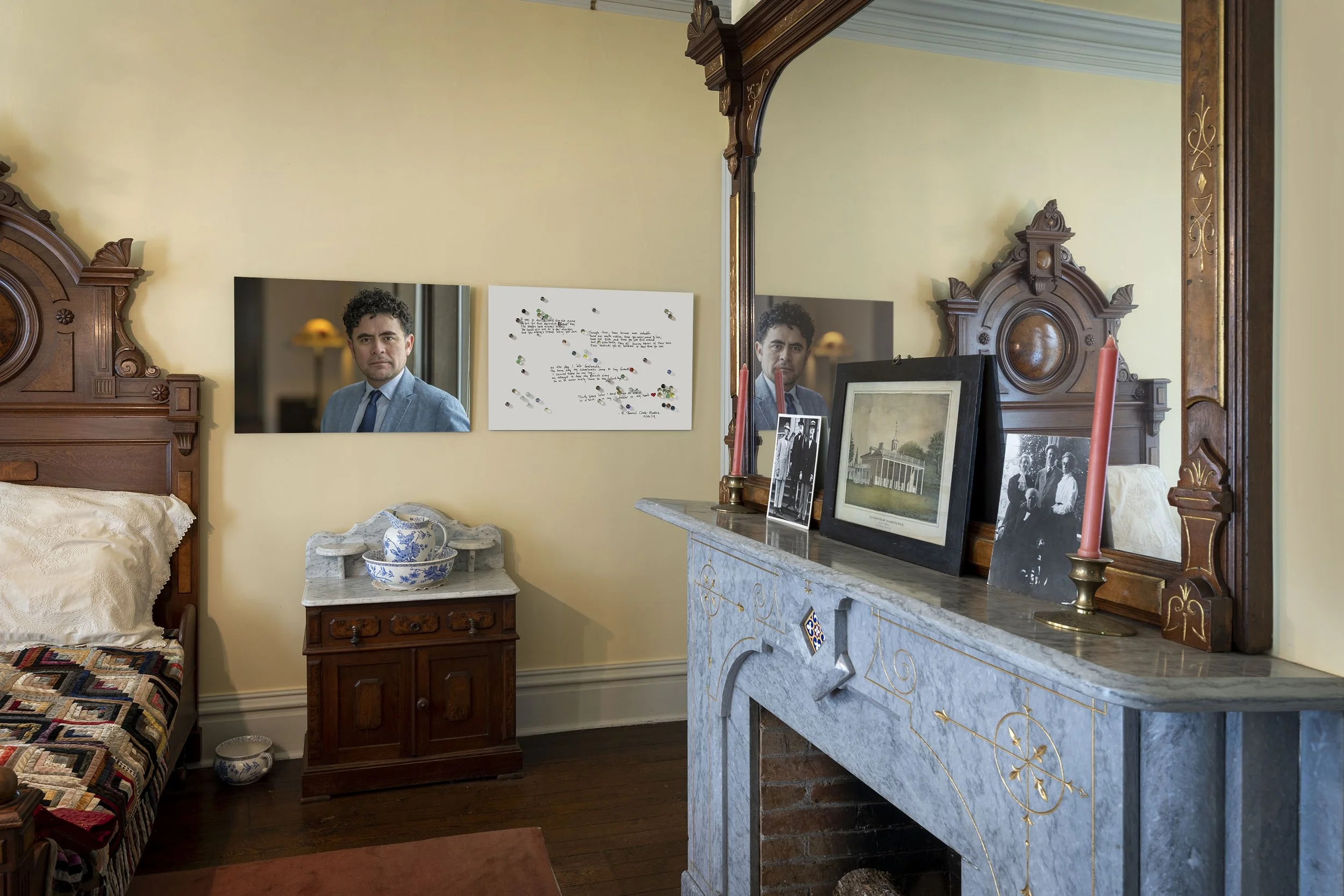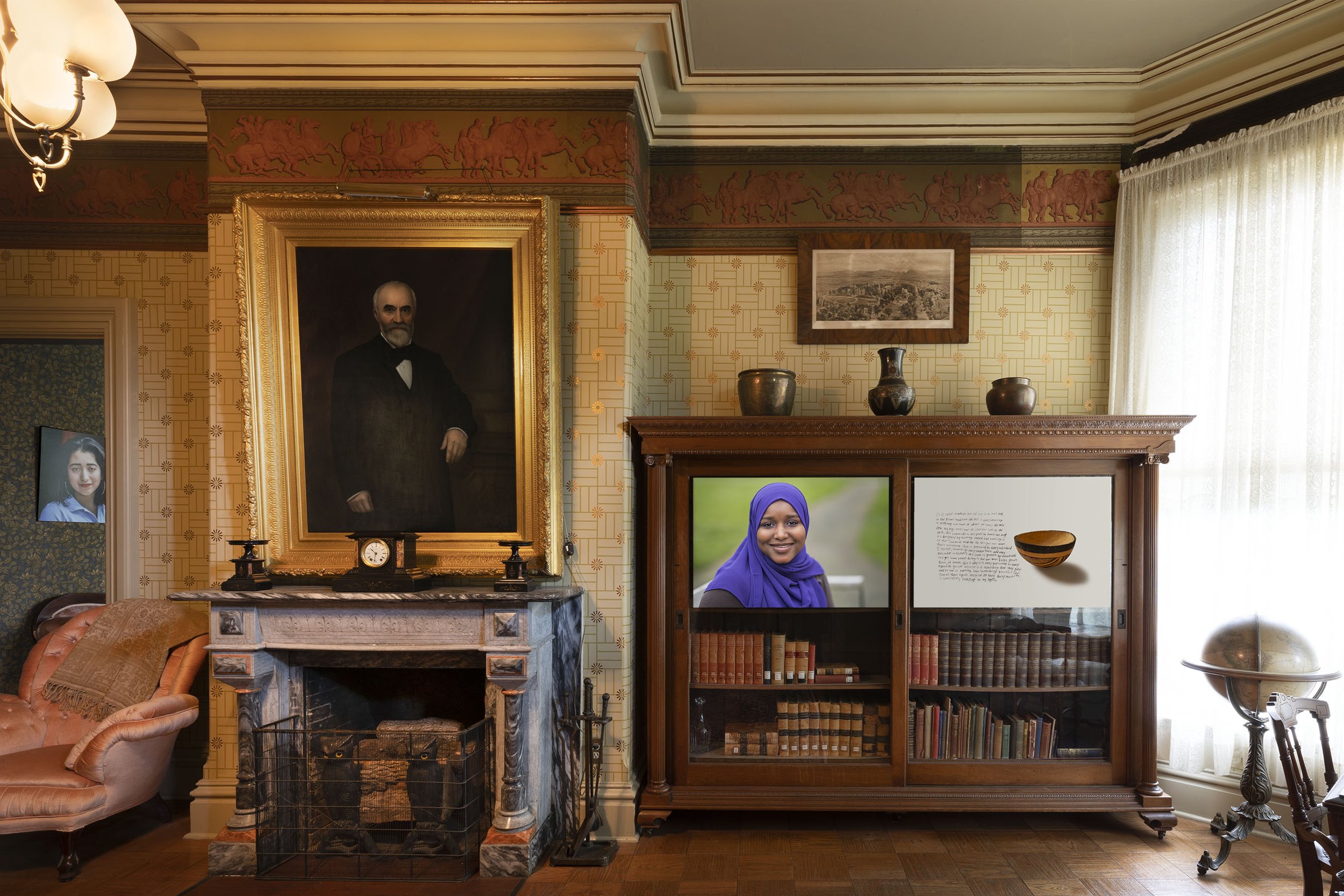Remaking the Monument:
Immigrant Stories at Bush House Museum
Curatorial Statement
Jen Richardson-Greene
Remaking the Monument: Immigrant Stories at Bush House Museum
Preservation shapes history, as well as cultures, traditions, and beliefs. When objects are passed down from generation to generation, they acquire stories and teachings that are held to be true. Preservation can also erase, oppress, and misrepresent. It teaches us who and what we value, and how we justify that which is deemed worthy of being saved, recorded and remembered. Pondering the time capsule of the Bush House Mu- seum, I wondered how do we confront white dominant narratives? How do we chal- lenge systems that exclude marginalized communities both historically and in this mo- ment? How do we connect to history and realize we are part of its making?
In Remaking the Monument: Immigrant Stories at Bush House Museum, The Salem Art Association partners with The Immigrant Story (founder Sankar Raman), and photographer Jim Lommasson to bring portraits, stories, and treasured objects of immigrants and refugees to the historic home of Asahel Bush.
An early Oregon businessman and founder of the Statesman Journal, Asahel Bush came to Salem at the urging of Samuel Thurston, in part, to create an all white state. He successfully lobbied the state legislature to disallow freed Blacks the right to vote and to reappropriate Tribal lands to white families settling across the Willamette Valley. He used his newspaper to amplify his political views and racist rhetoric. Because of such efforts, Oregon remained an unwelcoming place for people of color. Yet immigrants and refugees still came in spite of these restrictions. Today a vibrant, diverse and multicultural community makes a home in Oregon. These community members have deep roots in the state as well as deep traumas.
This exhibition celebrates the extraordinary lives of immigrants and refugees living in Oregon today. Their presence in the museum brings new meaning to rooms haunted by the racist rhetoric and actions of Bush and other advocates of the exclusionary laws that define early Oregon history. They hold our gaze with strength and compassion. They occupy spaces where difference was not allowed, where racism was fierce, and where abolitionists were disparaged. Their possessions challenge the notion of historical preservation. Their stories rouse our deepest stirrings of the American Dream, as they recount surviving war, genocide, incarceration, discrimination, and threats of deportation. These Oregonians inspire us by surviving the unspeakable, healing and leading communities, enriching our cultural tapestries, and breaking glass ceilings.
By contrasting objects of memory, culture, and survival with the collection of material objects in the historic home of Asahel Bush, we confront white dominant narratives embedded in historical preservation. We expose this space as a monument. We challenge the assertion that the Bush story is Oregon history, instead of the story of one family that held political and social power, whose father used that power to perpetuate racism and exclusion. We respond by celebrating the lives of our multicultural communities, recognizing that we are remaking history in what we choose to preserve.
Jen Richardson-Greene, Curator
Assistant Professor
University Studies / Art + Design Portland State University
Sankar Raman is the Founder and current board president of The Immigrant Story, a non-profit dedicated to the recording of immigrant histories through photography, interviews, journalism, recordings, exhibitions, podcasts, and live story-telling events. These historical testimonies offer an important means of connection by creating empathy and understanding across cultural barriers. In this way, The Immigrant Story offers a platform for documenting and sharing oral and cultural histories and healing personal trauma.
Jim Lommasson is a freelance photographer and author living in Portland, Oregon; next to each of The Immigrant Story portraits are his photographs of objects that are part of a larger series by Lommasson called What We Car- ried. These photographs of objects, memorabilia, culture, family, journey, loss, and identity are inscribed by each participant.


